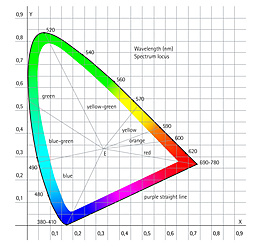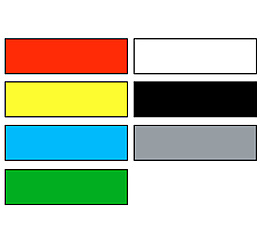
The body colour ârises as a result of the incident light and the specific absorption properties of the surface. Therefore, the tri-stimulus value of a body colour can only be determined in combination with the type of light with which it is illuminated. In addition to hue, brightness and saturation, the body colour of an object is also defined by the reflectance. When illuminating coloured walls or objects with coloured light, the reciprocal effect of light colour and body colour is paramount. This interplay is the basis of subtractive colour mixing. The chromatic effects can be intensified or altered.






